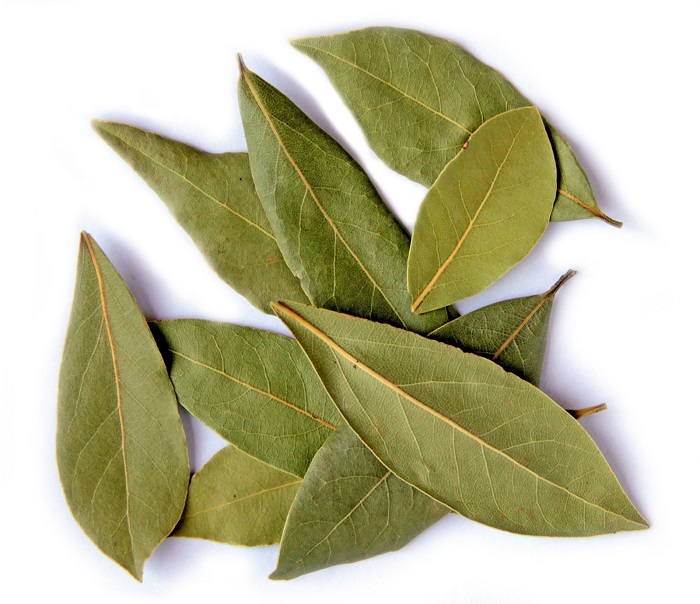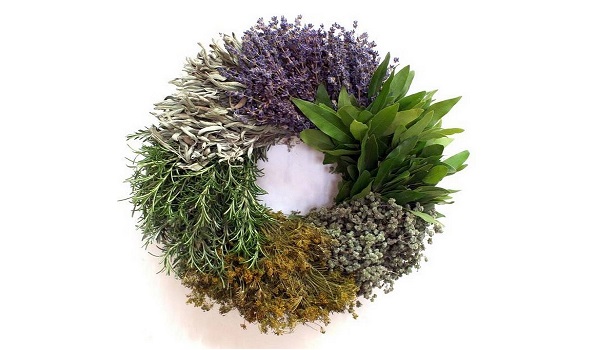Main Name: Bay Leaf
Biological Name: Laurus nobilis
Names in Other Languages: Hoja de laurel (Spanish), Tej patta (Hindi), Punnai ilai (Tamil), Karuvaela (Malayalam), Masala Aku (Telugu), Tamal patra (Marathi), Tej pata (Bengali), Tamal patr (Gujarati), Tejpatra (Oriya), Tejpata, Tezpatta (Punjabi), Tez pat (Urdu)
Biological Name: Laurus nobilis
Names in Other Languages: Hoja de laurel (Spanish), Tej patta (Hindi), Punnai ilai (Tamil), Karuvaela (Malayalam), Masala Aku (Telugu), Tamal patra (Marathi), Tej pata (Bengali), Tamal patr (Gujarati), Tejpatra (Oriya), Tejpata, Tezpatta (Punjabi), Tez pat (Urdu)
For anyone who has a good knowledge of Mediterranean or South Asian cuisines, knows the importance of bay leaves in the food. It is quite surprising how a single ingredient can drastically change the flavor of the food. Bay leaf is one of the oldest spices used by mankind to add flavor and aroma to food. A native of Asia Minor, bay leaf has become an important part of regions spreading across France and Turkey to Far North America and India. It is a common fixture in European and North American dishes, such as soups, stews, meat, seafood and other vegetable dishes. Bay leaves serve as an important constituent in “garam masala”, a fine combination of different ground spices in India. Throughout history, bay leaf is known for its myriad culinary and medicinal properties. Read further through the following sections to know the marvelous benefits that bay leaf provides to your health with its distinctive flavor and fragrance.
History
Bay leaf is indigenous to Asia Minor, from where it spread to the Mediterranean region and other favorable countries. Bay leaf cannot survive in colder climates, which counts as one of the main reasons of it not being cultivated in northern regions. Turkey is one of the leading exporters of bay leaves, along with countries like France, Belgium, Italy, Russia, Colombia, Central America, North America and India. The laurel tree, from which the bay leaf is derived from, holds an important place both symbolically and literally in both Greece and Rome. The laurel tree is a symbol of honor in these cultures and is one of the central components in many ancient mythologies. Bay leaf has its wide use in culinary dishes in Europe and North America. There are different beliefs associated with the bay leaf. Some people belonging to the Elizabethan era believed that pinning bay leaves to one’s pillow on the eve of Saint Valentine’s Day can help them see their future spouse in their dreams.
Bay leaf is indigenous to Asia Minor, from where it spread to the Mediterranean region and other favorable countries. Bay leaf cannot survive in colder climates, which counts as one of the main reasons of it not being cultivated in northern regions. Turkey is one of the leading exporters of bay leaves, along with countries like France, Belgium, Italy, Russia, Colombia, Central America, North America and India. The laurel tree, from which the bay leaf is derived from, holds an important place both symbolically and literally in both Greece and Rome. The laurel tree is a symbol of honor in these cultures and is one of the central components in many ancient mythologies. Bay leaf has its wide use in culinary dishes in Europe and North America. There are different beliefs associated with the bay leaf. Some people belonging to the Elizabethan era believed that pinning bay leaves to one’s pillow on the eve of Saint Valentine’s Day can help them see their future spouse in their dreams.

Health Benefits of Bay Leaf
- Bay leaf greatly helps in digestion. It is used as a natural remedy in a wide range of digestive disorders. Not only does it help in settling the stomach but also reduces the severity of problems, like celiac disease or irritable bowel syndrome. It effectively reduces flatulence and other gas related problems. It contains enzymes which break down proteins and help in digesting meat dishes.
- Bay leaf, when applied to the chest in the form of bay leaf compress, provides great relief to respiratory and chest troubles, such as coughs, flu, bronchitis, and chest infections. Further, it also helps in inducing sweat and reducing fever.
- Washing the scalp with cold water, with bay leaves steeped in it, after shampooing effectively treats dandruff. Alternatively, you can add ten to fifteen drops of bay leaf essential oil to your shampoo to get rid of dandruff.
- Bay leaf contains Parthenolide, a phytonutrient which has anti-inflammatory properties. As such, massaging with bay leaf essential oil helps in relieving joint and muscle pains, including arthritis pain.
- Bay leaf contains the phytonutrients, caffeic acid and rutin, as well as salicylates. These phytonutrients protect the heart and lower the risk of strokes and heart attack.
- Bay leaf is a good source of Linalool, a compound which is also found in herbs, such as thyme and basil. This compound has long been used as a relaxing fragrance in aromatherapy. Studies reveal that this calming aroma has protective effects on the immune system like shielding the body from negative effects of stress.
- Bay leaf helps in regulating blood sugar levels. The compounds present in bay leaves facilitate the quick processing of insulin, thereby preventing spikes in blood sugar levels.
- The various phytonutrients, caffeic acid, catechins, eugenol, parthenolide and quercetin, present in bay leaves help in protecting the body from many different kinds of cancer.

http://www.saminaspiceandfood.in/product/bay-leaf-tejpatta/
Bay Leaf Nutrition FactsAmount: 100 g
Weight: 100 g
Weight: 100 g
| Nutrients | Amount |
| Basic Components | |
| Proteins | 7.6 g |
| Water | 5.4 g |
| Ash | 3.6 g |
| Calories | |
| Total Calories | 313 |
| Calories From Carbohydrates | 225 |
| Calories From Fats | 70 |
| Calories From Proteins | 19 |
| Carbohydrates | |
| Total Carbohydrates | 75 g |
| Dietary Fiber | 26 g |
| Fats & Fatty Acids | |
| Total Fat | 8.4 g |
| Saturated Fat | 2.3 g |
| Monounsaturated Fat | 1.6 g |
| Polyunsaturated Fat | 2.3 g |
| Omega-3 Fatty Acids | 1.1 g |
| Omega-6 Fatty Acids | 1.2 g |
| Vitamins | |
| Vitamin A | 6185 IU |
| Vitamin C | 47 mg |
| Thiamin | 9 mcg |
| Riboflavin | 421 mcg |
| Niacin | 2 mg |
| Vitamin B6 | 1.7 mg |
| Folate | 180 mcg |
| Minerals | |
| Calcium | 834 mg |
| Iron | 43 mg |
| Magnesium | 120 mg |
| Phosphorus | 113 mg |
| Potassium | 529 mg |
| Sodium | 23 mg |
| Zinc | 3.7 mg |
| Copper | 416 mcg |
| Manganese | 8.2 mg |
| Selenium | 2.8 mcg |
How many calories in bay leaf (per 100 gm)?
Bay leaf has about 313 calories per 100 gm of weight.
Bay leaf has about 313 calories per 100 gm of weight.
How to Buy Bay Leaf
- A variety of bay leaves are available in spice stores, such as fresh, whole dried, dried crushed, freeze-dried, dried ground etc. Always buy them from authentic sources and avoid ones with an off-smell, with spots, or fungus infected leaves.
- While buying fresh bay leaves, look for dark green and oval shaped leaves. Smell them for a mild aroma.
- Dried bay leaves are less aromatic compared to the fresh ones.
- It is best to buy dried bay leaves in small quantities since they loose their flavor quickly and old leaves will not give you the right amount of taste and flavor.
http://healthandstyle.com/health/health-benefits-of-herbs-%E2%80%8Eguide/
Bay Leaf Storage Tips
- Fresh bay leaves should be wrapped in a paper towel in a plastic bag in the refrigerator. They have a shelf life of about one week.
- Dried bay leaves should always be stored in an airtight jar or container in a cool, dry place away from strong light.
- While dried bay leaves can be easily stored for up six months, it is recommended to use them as soon as possible as they tend to lose their flavor too soon and become stale and dull.


